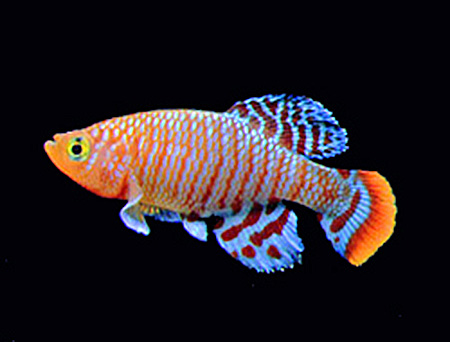Killifish: the fish that is not quite a fish
When we think of fish, there are certain assumptions we make:
Over a few years, little fish grow and grow, until they become old fish. Fish breathe using their gills. Fish live in water – in fact fish can’t live out of water. And to get about, they swim, in huge bodies of water like lakes and seas and oceans.
However, there is one group of fish that does not follow any of these rules.
Known as killifish, these small innocuous-looking creatures measure just a few inches long. Many species are flamboyant and kept as pets in aquariums but others look ordinary. However, they are among the oddest fish on the planet and some can claim to be the world's most extreme.
To cope with the water-scarce living conditions of Africa, the turquoise killifish has a life cycle of just 10 weeks. They quickly grow to maturity during the wet season in order to breed and lay eggs and perish when the pools start to dry out.
Their eggs however survive the dry season in a dormant state, or diapause, buried in the soil until the following rainy season. The return of the rains causes the eggs to hatch and the cycle begins anew. The killifish embryo is able to stop growing at different times during the development and then start again when conditions are right.
The mangrove killifish has its own tricks too – it can breathe through its skin! Water in mangrove swamps contains little oxygen; the water also disappears during the drying season, literally leaving the fish high and dry, clinging to the mud or tree branches. Mangrove killifish can survive out of water for up to 66 days by breathing air through their skins.
Living on land poses mobility challenges. The killifish get around by perching upright on their bellies, and then purposely waddling their bodies. They even use their tails to flip into the air, with such force that it propels the fish many body lengths into the air.
Some killifish can also use this technique to hunt and pounce on other animals. One species is known to capture prey by leaping 14cm into the air. Another will also leave water to avoid being eaten by bigger predatory fish.
Extreme indeed!
All images - Credit: Wikimedia Commons under Creative Commons license








